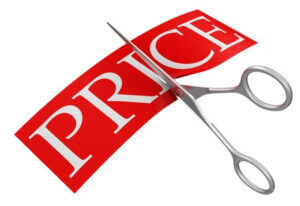- Advertising (0)
- Branding (5)
- Business awards (2)
- Business Development (19)
- Business Growth (7)
- Business listening (1)
- Buyer behaviour (4)
- Client loyalty (6)
- Client Relationship Management (5)
- Conferences (0)
- Conferences and Events (3)
- Content marketing (4)
- Customer experience (11)
- Customer feedback (4)
- Digital marketing (6)
- Direct mail (0)
- Endorsements and recommendations (5)
- Exhibitions (3)
- Exhibitions, Conferences and Events (0)
- GDPR (0)
- Internal marketing (0)
- Key client management (5)
- LinkedIn (5)
- Marketing budgets (3)
- Marketing campaigns (8)
- Marketing Communication (7)
- Marketing measurement (1)
- Marketing on a tight budget (4)
- Marketing planning (20)
- Marketing strategy (17)
- Networking (8)
- News (3)
- Online advertising (1)
- Personal branding (4)
- Personal Development (0)
- Pitching for work (4)
- Presentations (0)
- Pricing and discounting (2)
- Promotional events (0)
- Reputation management (2)
- Sales process (3)
- Search engine optimisation (1)
- Small business marketing (1)
- Social media (7)
- Supplier Management (1)
- Thought leadership (1)
- Website development (3)
5 alternatives to discounting your price
It’s a challenging time for businesses when it comes to setting their prices. Most customers are feeling the pinch from higher inflation and its impact on their costs. It’s prompting many customers to review what they’re paying and the value they’re getting for that price.
The outcome of this is a lot more ‘price’ conversations between businesses and their customers, and a push from customers for discounts. This isn’t helped by:
- The wider availability of pricing information online
- Greater numbers of suppliers for every need and purchase, and
- customers undertaking more research in the buying process
- more people in the customers’ decision-making team being involved in a purchase.
Customers are subsequently having greater confidence to question price, and also shop around for comparative quotes from numerous suppliers.
So how should you respond to a customer who is pushing you to discount your price? Should you accept their demands in order to secure this sale in what is probably a competitive market? How can you protect your profitability and cover your own costs, which are also rising with inflation?
The implications of accepting the ‘discount’ challenge
 A discount may help your short-term revenue, but over time it can seriously damage your profitability and chances of growing the business further. Also, consider whether you will be able to stop at this one discount, or if your customers will then keep pushing you to shave more and more off your prices.
A discount may help your short-term revenue, but over time it can seriously damage your profitability and chances of growing the business further. Also, consider whether you will be able to stop at this one discount, or if your customers will then keep pushing you to shave more and more off your prices.
What does that discount say about your original price and the value it represented? By discounting, you may find you are suggesting a façade – that in reality your prices are there to be knocked down and the quality of your offering justifies this.
Resisting the urge to discount
Having worked with many businesses over the years, here are 5 ways to help you resist the urge to discount and protect your profitability in the long-term…
1. Be confident
 Feeling unsure about your price and whether the customer will pay it will become apparent to them pretty quickly. To help boost your confidence investigate what other rivals are charging for the same products or services. One company we helped undertook a mystery shop on their competitors to see what their offering included for the price and to identify how their approach differed.
Feeling unsure about your price and whether the customer will pay it will become apparent to them pretty quickly. To help boost your confidence investigate what other rivals are charging for the same products or services. One company we helped undertook a mystery shop on their competitors to see what their offering included for the price and to identify how their approach differed.
Where there is very little difference between you and the competition, look at your business model. Can you tweak components in how you put the product or service together and prompt greater perceived value for money as a result (see point 5)?
If your product/service does indeed represent a fair price in the market, and you can differentiate it from competitors’ offerings, you’ll be more confident in defending your price.
You can also be more confident if you understand your current profitability threshold (given rising costs) and have produced the product/service in the most efficient way to arrive at a fair price from the outset.
2. Check what the customer is comparing your price to
 If a customer says your product/service is too expensive, it is important to explore what they are comparing your offering to. If you understand your competitors’ offerings, you can then articulate how your approach is different and educate the customer on the differences this price reflects. It may be that the customer isn’t comparing like for like.
If a customer says your product/service is too expensive, it is important to explore what they are comparing your offering to. If you understand your competitors’ offerings, you can then articulate how your approach is different and educate the customer on the differences this price reflects. It may be that the customer isn’t comparing like for like.
Going back to the example of the company who did the mystery shop on their competitors, the insights they gained enabled them to pinpoint exciting points of difference and added value which their rivals weren’t providing. They were then quick to make the most of these in their marketing and sales messaging.
In time this insight helped them to convert more sales. The additional free services and support they had traditionally built around their product offering now made their price represent greater value for money from the customer perspective.
The more insight you can gain from customer as to how they view this purchase (and what they’re looking to gain from it); the more opportunities you’ll have to identify how competitors do not satisfy their needs as well as you do.
3. Really emphasise the wider value of your product or service

Throughout the sales process, it is important to share the wider benefits the customer will gain from this purchase. If a customer is sensitive to price, ensure they understand how this purchase will save them hassle or time. Helping them to solve an issue or achieve something with less effort has real value.
Never underestimate the value of time in people’s lives. We’re all so busy with little spare time available. If purchasing your product or service will save a customer time, then quantify that time-saving.
If you can, try and quantify that time as a monetary value – or in terms of what else the customer could then be getting on with. Many will be impressed and subsequently feel this purchase is a ‘no-brainer’.
We regularly work with lawyers and accountants who don’t have a reputation for being cheap, but who do have a reputation for helping clients to save time and money. They also help their clients avoid making costly mistakes (which also cost time and money to then sort out). Think of the implications which would ensue in order to sort out the mess and fend off fines/demands from the likes of HMRC or an employment tribunal.
4. Change the spec if you change the price

If you are really being pushed to lower the price, then change the spec of your product or service to arrive at a cheaper rate.
This will demonstrate you are indeed charging a fair price to begin with and a drop in price can only work if the components of the product or service change.
If you are offering a service, see if the customer wants to take on an element of the assignment or project themselves, so your team doesn’t (and so the price can drop).
5. Develop your product or service into a package

The rationale here is to demonstrate greater value around your offering, so people think they’re getting more value for money from you. This isn’t about fielding the lowest price, it is about creating low-cost add-ons and further service features which you wrap round your product/service so overall it feels a great deal.
The challenge is to find those add-ons which don’t then eat significantly into your profitability and which impress the customer. Some good examples include:
- Free training or help with installation (on purchases of a software product).
- The offer of spreading the fee over a series of payments to help cashflow.
- Entry into an exclusive customer club who get invited to special events and receive first tasters of new product ranges.
Whatever elements you build into your package, don’t forget to articulate the value of them to the customer so they feel they are making a saving in some way (just not via a discount of your product or service).
Summary
Pressure to discount your prices is likely to continue. Price information is more freely available in the market and savvy customers will research what offerings like yours cost. The challenge then is to remain competitive and ensure your business operations are run efficiently so you protect your profitability where you can. You also need to monitor regularly what the competition are doing – including any sudden special offers and promotions they’re publicising.
One other thing to consider is if you are really reaching the type of customers who will be happy to pay your prices. This involves re-evaluating your target market and how you come across in your marketing. If you ‘look and feel’ cheap and cheerful in your branding, key messages and approach, then people will expect you to operate at the lower end of the price range.
If your approach demonstrates exceptional quality and an outstanding customer experience, they will be more comfortable paying a premium price. Being clear about your company’s proposition to your market and consistently delivering on that so the price you charge is perceived to be fair, and represent good value is the key to achieving your pricing strategy.
For more pricing and business tips do contact us or tel. 01483 429111.

